It’s late on a lonely Friday. Instead of going out on the town with your friends, you’re suffering through another night of standing duty. The phone rings. It’s the front gate; they’ve apprehended someone from your unit for driving drunk and need you to fill out paperwork.
After walking to the ECP (because only the duty officer gets GOV keys and he’s been racked out since 2100), you realize that all of your dreams are coming true. The drunk idiot is your first sergeant; the one with the flat-top who always chews you out for wearing “eccentric” shoes to the gym after work. Who’s that in the passenger seat? Not his wife, but a chain-smoking stripper. And you get to write it all down in the logbook for time immemorial.
This is where things take a turn for the worse. He’s belligerent and refuses to step out of the car. The door is locked. Ever prepared, you whip out your trusty tactical pen, smash the car window into a million pieces and drag the drunk first sergeant out of the vehicle to the wild cheers of base security, the nearby barracks residents, and Uncle Sam.
Tactical pens might as well have been invented for exactly this kind of situation. When else would you need to switch so quickly from writing, to breaking tempered glass, to physical conflict? That’s a weirdly specific sequence of events. Consider tactical pens a variation of the multitool: they pack a variety of travel-sized gadgets into a convenient package you can carry every day. But are they worth it?
There are arguments in both directions. The folks who make tactical pens would probably have us believe that carrying a traditional pen is the most irresponsible, soft, beta move you can possibly make. You can’t smash tempered auto glass to escape a burning vehicle with that wimpy little clicker-pen; you can’t fight off an assailant with something made from recycled plastic. A hardened warrior with a 3,000-year-old-mind like yourself needs aluminum, steel, black Cerakote, and hidden gadgets. Your writing utensil, they argue, should be more tactical.
And they have a point. As much as the idea of a tactical pen makes me chuckle, there’s a morsel of truth to the concept. I’m a big advocate of carrying gear that can perform multiple jobs, like bushcraft knives that come with a ferro rod for starting fires. I trust analog things like backup iron sights that don’t need batteries to be effective. Having a pen that can break glass and give you a hand-to-hand edge isn’t a terrible idea. It might be overkill for someone who works in a cubicle, but if you spend time standing guard at an ECP, a tactical pen might be a useful piece of kit.
On the other side of the argument are those who say tactical pens are nothing more than a gimmick; a money-grab aimed at people who don’t know any better. Critics argue that the only use your tactical pen will get is writing a note to your mom reminding her to get more Hot Pockets on her way home from work. The rest of the time, it’ll sit next to your untouched second Xbox controller collecting Cheeto dust while you get your ass handed to you by nine-year-olds on Call of Duty.
To be fair, there is a certain mall-ninja vibe that comes from tactical pens. I saw exactly zero of them in Afghanistan. Your experience overseas and in the field is probably similar. There isn’t much use for a pointy metal pen when you have an M4 in your hands and the full might of American air power on demand. Maybe the haters are right. Maybe tactical pens are for office warriors and people who work unarmed event security because they couldn’t make it onto the local police force.
The only logical way to accurately evaluate the merits of the lowly tactical pen choice is to order up a handful and see what’s up for ourselves. The test mules for this experiment would be the 5.11 TacticalVlad, Boker Plus Tactical Pen, Gerber Impromptu, Schrade Reckon Ultimate, and Skilcraft Defender. To put these tactical pens to the test, we devised a five-part evaluation process during which each pen would see use as a pen, glass breaker, and self-defense weapon. Some include unique specialty tools, so those would get a chance to demonstrate their value, as well.
Methodology

First impressions
Out of the box, all of the test pens we purchased sported a black finish–some glossy, some matte. The 5.11 Tactical, Boker Plus, and Gerber pens had a nice matte finish that did a good job of absorbing light rather than reflecting it. The Schrade and Skilcraft were noticeably glossy by comparison. Most of the manufacturers don’t specify how these colors were achieved, although Boker and Gerber make a point of stating that their pens are anodized and Cerakoted, respectively.
Weight is a major consideration when it comes to tactical pens since most of us never considered that a pen would add appreciable heft to our pack. We weighed each pen on a digital kitchen scale to establish an objective comparison. With one exception, these pens fall within half an ounce of each other and don’t exceed 1.7 ounces. The outlier is the Gerber, which clocked in at 2.3 ounces because it’s made from stainless steel rather than aluminum. I don’t doubt the strength of any of these pens, but I’m particularly confident in stainless steel wrapped in Cerakote. The Gerber is also one of the smallest pens in the group, and it fits the hand well.
Manufacturer Weight
- 5.11: 1.6 oz
- Boker: 1.7 oz
- Gerber: 2.3 oz
- Schrade: 1.4 oz
- Skilcraft: 1.2 oz
Writing when wet
It is my professional opinion that any pen that can’t write when it’s wet is not tactical. Anyone who’s been to the field knows that normal note-taking gear becomes useless in the face of precipitation. A pen that fails when you need to write down a radio frequency, nine-digit grid, or other important information is unacceptable.
To make sure these tactical pens are up to snuff, I grabbed my trusty Rite in the Rain notepad and a garden hose. Using the mist function, I applied a layer of moisture to the paper and wrote one line with each pen. Just to be sure, I gave the page a good rub with my hand to see if the ink would smudge.
Breaking glass
Many tactical pen manufacturers seem to place a high premium on being able to smash windows. Maybe being trapped behind tempered glass is a more common threat than we realize; maybe glass-breakers are just a convenient tool to add to a pen. Either way, we wanted to know if our test pens could get the job done.
Auto glass is probably one of the more realistic obstacles that would require a glass breaker. Despite what Hollywood tough guys suggest, glass that’s designed to survive a car crash is surprisingly tough to break. Tempered glass does shatter, but it breaks in such a way that prevents sharp edges and dangerous shards. Laminated glass will break and allow projectiles to pass through, but bonded plastic material holds the rest of the glass together, even if it’s severely cracked. Laminated glass is significantly more expensive, so it’s often reserved for windshields, which take more abuse than side or rear windows. If you’ve ever experienced a severe hailstorm, you might have noticed that cars’ side and rear windows got obliterated while windshields only cracked. Now you know why.
I turned to my local salvage yard for five car windows — all representative of what you see on the roads today — to pit against the tactical pens. Since these were small quarter windows, they were all tempered rather than laminated. I’ve conducted this kind of testing before, and I know that a good rescue tool will make a car window disintegrate on contact. The bar for our tactical pens was high.
Puncturing
When it comes to marketing, the companies that make these tactical pens can be a bit vague. They’re all adamant that tactical pens can be used as a defensive device —and they’re pointy — but none of the product descriptions go so far as to say these are weapons. The TSA is clearly willing to make that leap because tactical pens are not permitted on commercial flights in the U.S.
The mystery remains, then. If these companies aren’t intending for their pens to be used as weapons, there must be some other use for a metal spike that can puncture various surfaces. I strapped on my thinking cap and determined that they must envision their products being used to stab a coconut and make a refreshing rum drink. That seemed like a fitting and delicious test, so onto the schedule it went.
The results of this test ended up being so consistent that we can cover them now rather than going pen-by-pen. Only the 5.11 Tactical Vlad and Skilcraft Defender made a dent in the coconuts. These two might have a slight edge over a normal pen in daiquiri-related combat, but the rest are a wash.
Specialty tools
Maybe I watched ‘Goldeneye’ too many times as a kid, but I really thought pen grenades would play a bigger part in adult life. None of these tactical pens pack an explosive surprise, but some do have pretty ingenious tools. I used these tools and considered their performance in my assessment even though they aren’t an apples-to-apples comparison.
Results
Included tools
- Aluminum body
- Rite in the Rain ink cartridge
- Glass-breaker
- Pocket clip
PROS
Broad body provides excellent grip when used as a tool
Best performance in the wet writing test
Best performance in the puncture test
CONS
Either the pen tip or aggressive glass-breaker is always exposed
Probably the least inconspicuous of the group
Packaging says Rite in the Rain but the ink cartridge is unmarked
The Vlad gets points for simplicity. With no clicker mechanism or hidden gadgets to store, it’s an elegant design that doesn’t leave many things to go wrong. There’s no fumbling around while you try to remember which pieces have left-hand threads. The one downside of this is the sharp glass-breaker, which remains exposed any time the cap is covering the pen. Both ends are threaded to accept the cap and hold it securely, but you have to choose one or the other.
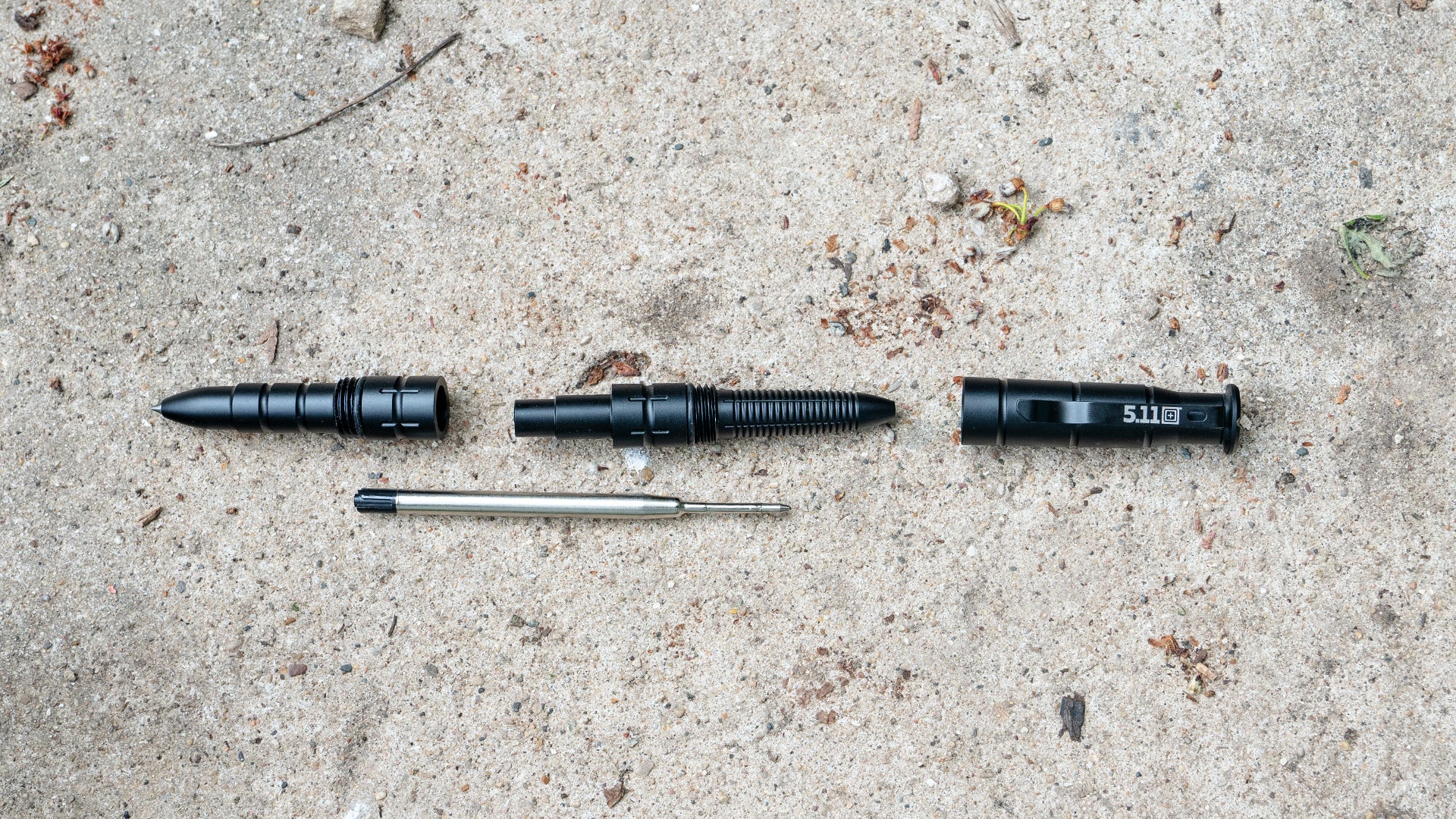
I was curious to see how the Vlad would perform in the rain. The ink cartridge is unmarked, although the packaging claims it’s a Rite in the Rain. Whatever it is, it works. I’d go so far as to say it handled the wet Rite in the Rain notepad better than any of the other pens here. The color was dark, the ball rolled well, there were no imperfections, and the ink didn’t smudge. The letters looked like they were written on a dry piece of printer paper.
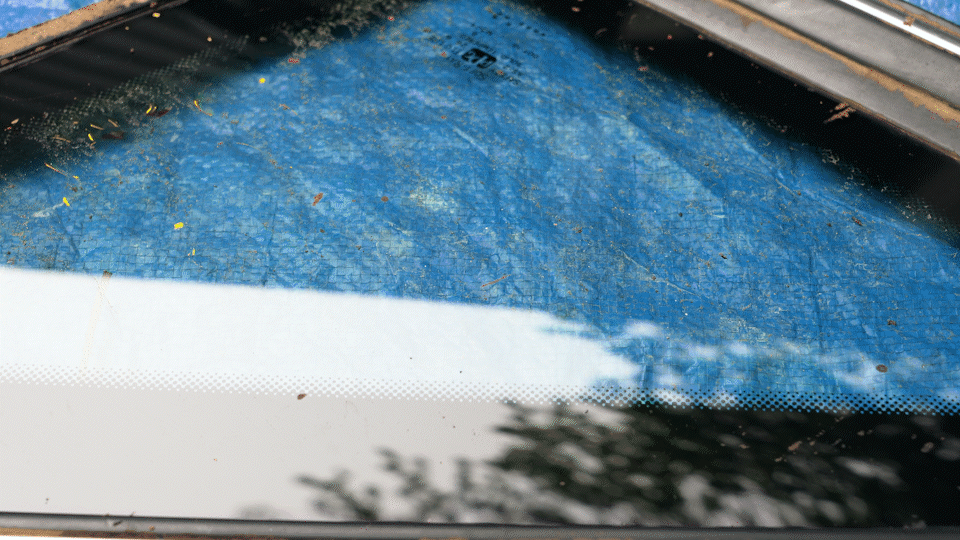
In our glass-breaking test, the Vlad popped right through the tempered safety glass from a car window. Much of the glass remained in place but easily fell away as soon as the frame was moved. I’d feel very good about my chances of escape if the Vlad was the only tool available after a car crash.
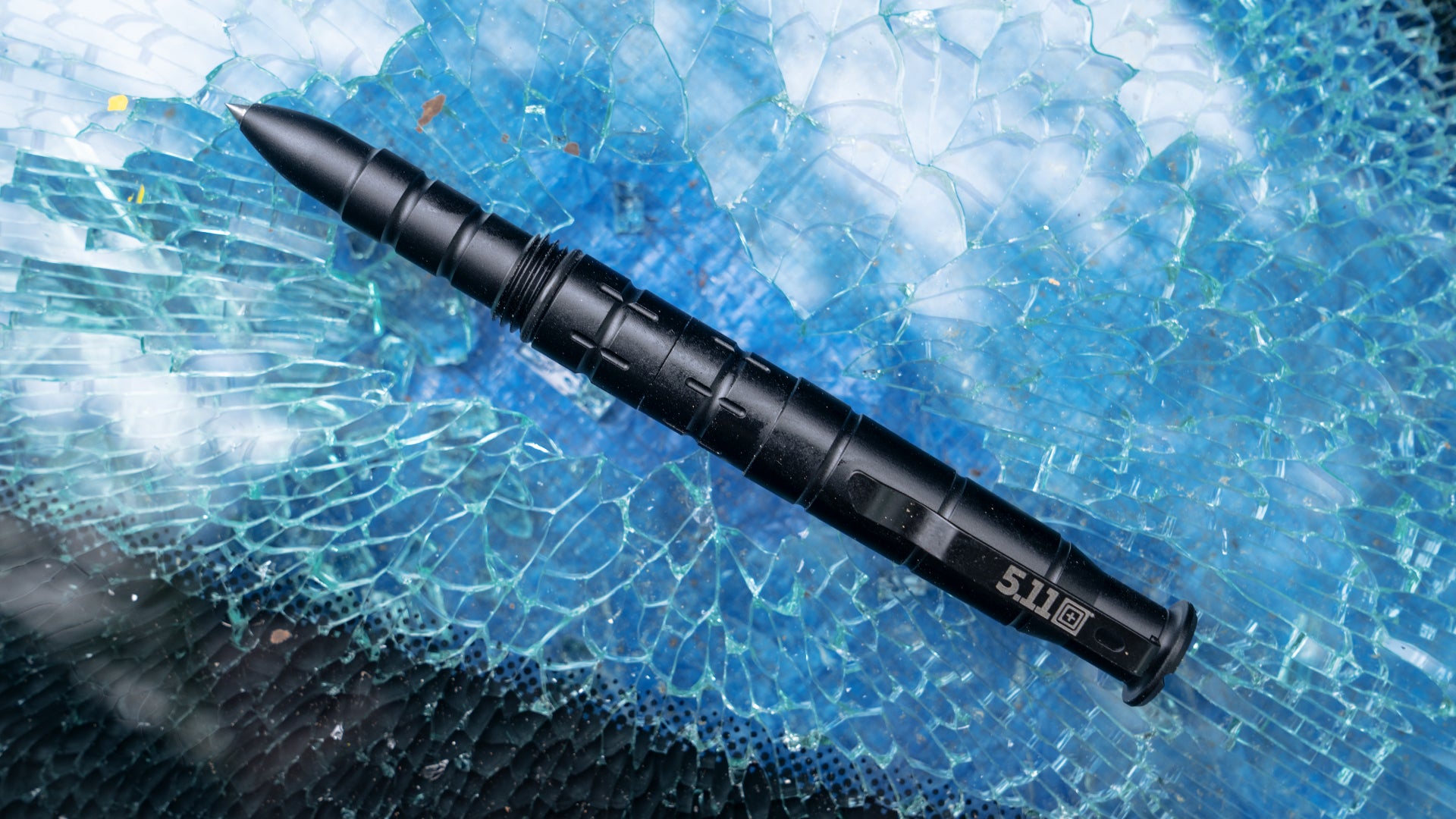
All in all, the 5.11 Tactical Vlad is a beefy tactical pen that has some legitimate selling points. I was impressed with its performance during the wet writing test. It’s light and strong, and the sharp glass-breaker proved itself to be capable against auto glass and the dreaded coconut shell. Let’s be real; even the most pedestrian EDC knife would be better than this pen in combat, but it’s better than nothing. More importantly, it’s better than the office pens we see every day.
Included tools
- Aluminum body with anodized finish
- Unmarked ink cartridge
- “Stainless steel inset” that’s totally not a weapon
- Pocket clip
PROS
Rounded tip provides a nonlethal alternative to a sharp point
One of the more discreet EDC options here
Feels like a high-quality product
CONS
Nowhere to secure the cap when writing
Body has an awkward shape for writing
Not useful for breaking glass
Boker Plus’ tactical pen is similar to the 5.11 Tactical Vlad in many ways. It’s comparable in size and relatively simple. The only gadget is a rounded steel insert on the end that Boker describes as a kubotan — a blunt defensive tool used to target pressure points. The cap screws on with regular threads and the pen can be disassembled with reverse threads.
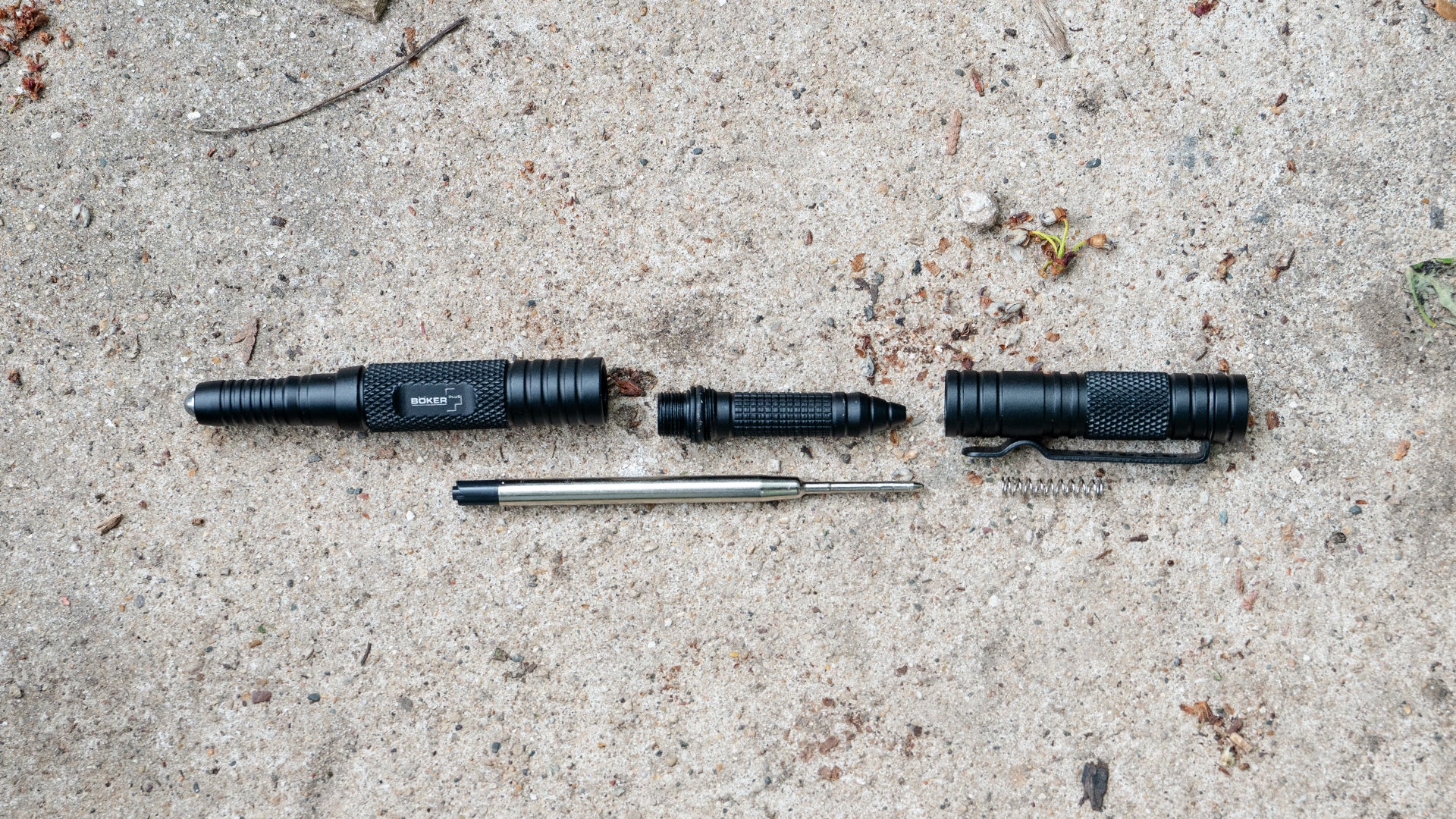
During the (admittedly subjective) writing test, the Boker landed right in the middle. It wasn’t great, but the writing was legible and didn’t smudge. It’s also worth pointing out that any of these pens may be able to accept different replacement cartridges if you want to try something else. Don’t let a consumable item stop you from buying a pen that’s otherwise right for you.
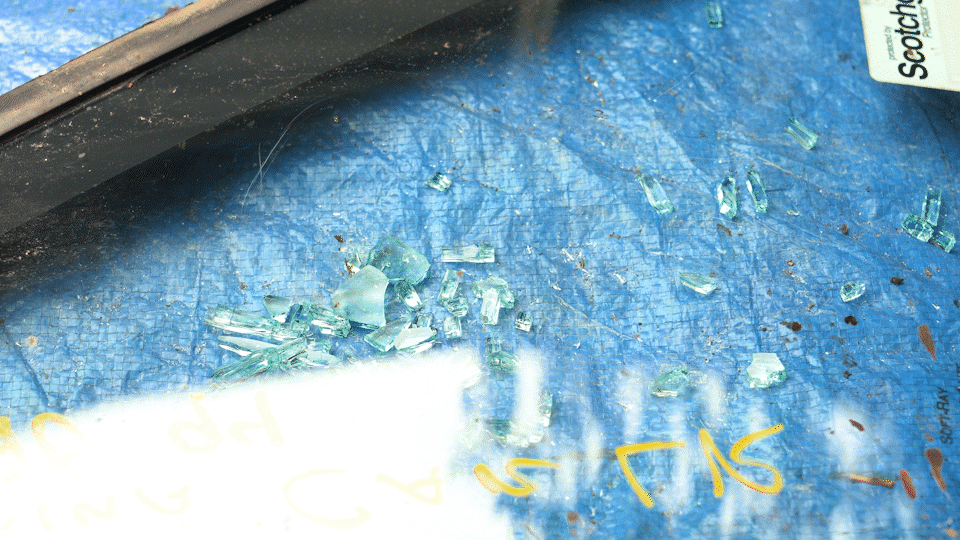
Glass is fragile and steel is strong — this we know. Surprisingly, an old window stood strong against the Boker Plus tactical pen. I wound up for a second strike to no avail. All I got was a dull thud and a slight flex from the auto glass. To be fair, Boker makes no claims about the steel insert being a glass-breaker. It’s a kubotan designed to target pressure points in hand-to-hand combat. Still, I wanted to see how it would fare against dedicated glass-breakers.
Before anyone points out the natural inconsistency inherent in my strikes, I should point out that proper glass-breakers require very little force to be effective. Three of the five pens on this test smashed windows with a fairly casual swing and almost no windup. What breaks glass is pressure per square inch. That means that the sharper the point, the more concentrated your energy becomes, and the better your odds of breaking the glass. The rounded ball on the Boker just disperses the energy over too much surface area.
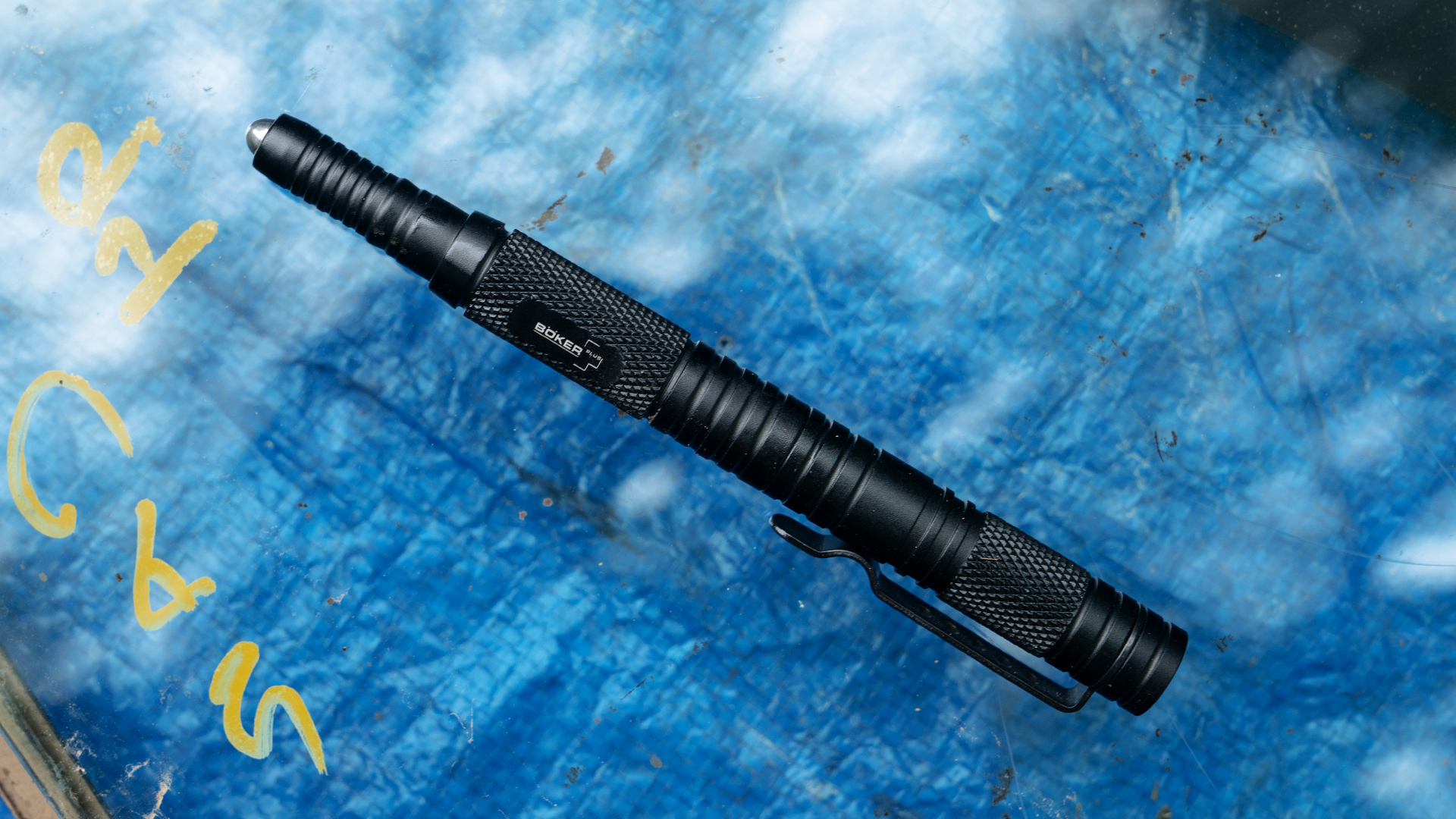
The Boker tactical pen’s wet weather performance was unremarkable, but it did work. It can’t be trusted as a glass-breaker, but that’s not a requirement of every tactical pen. On one hand, I didn’t like how the pen felt in my hand and I was annoyed that there wasn’t a way to secure the cap while I was writing. On the other hand, the kubotan design is unique on this list. Unlike a knife or some of the other pens here, it doesn’t approach conflict with an intent to draw blood. Less-than-lethal techniques are important, and I liked having the option to use pressure points or blunt force to defend myself before escalating further.
Included tools
- Steel body with Cerakote finish
- Rite in the Rain ink cartridge
- Glass-breaker
- Pocket clip
PROS
Stainless steel and Cerakote make this the strongest pen here
Love that branded Rite in the Rain ink cartridge
Best performance in the glass-breaking test
CONS
Glass-breaker’s positioning can interfere with writing
Small body doesn’t offer as loads of grip
Might be too heavy for some people
Gerber makes products that range from entry-level to premium, but I’ve always had good luck with them in the past. The Impromptu feels high-end right out of the box, possibly because of the extra weight. This pen uses stainless steel and Cerakote instead of aluminum and anodizing or paint. It’s the smallest pen of the group and fits the hand nicely. It’s one of the better options for people who want to fly under the radar.
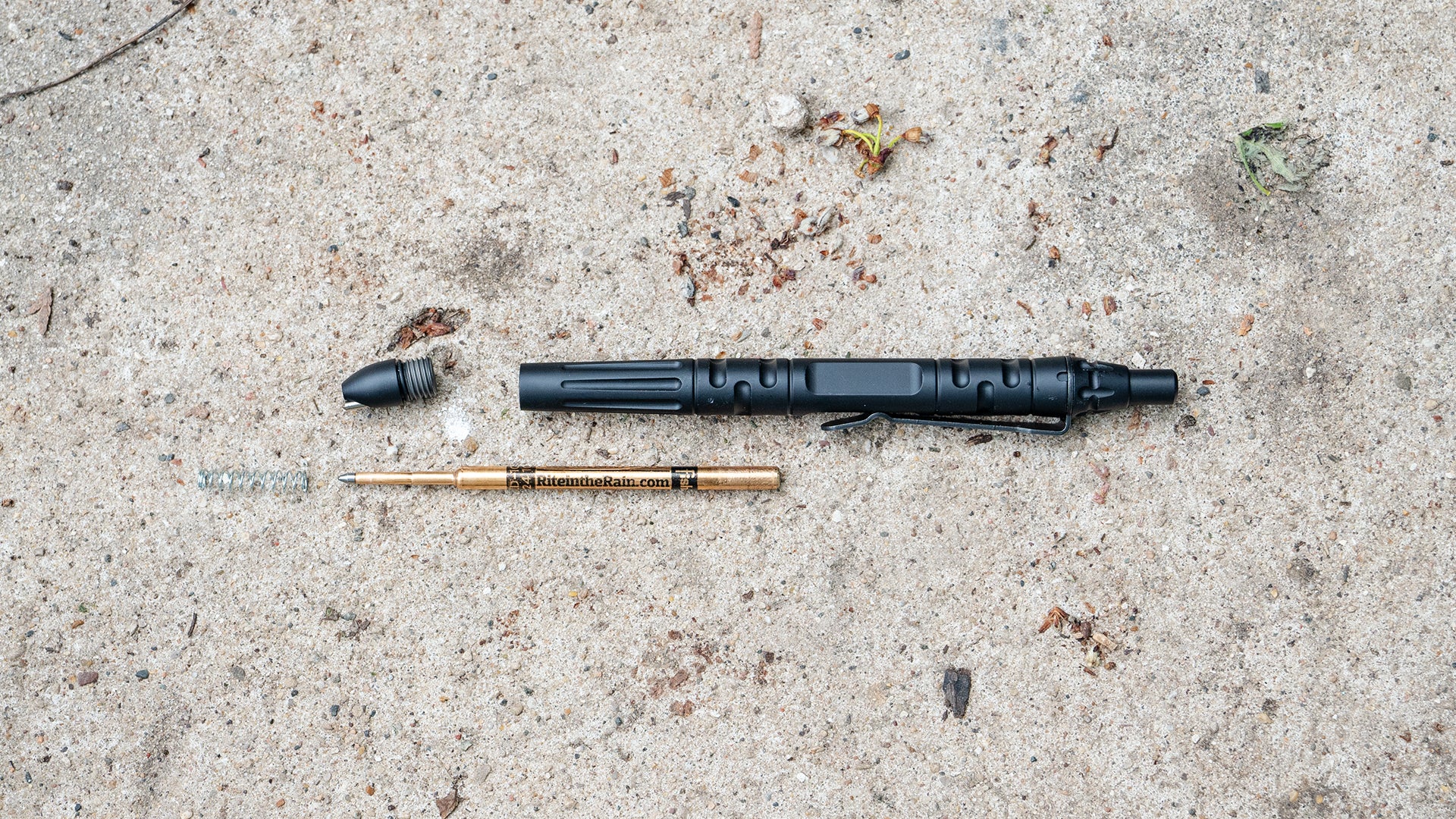
In the wet, I rank the Impromptu’s performance in second place. It was nearly as good as the Vlad, but with just a few minor imperfections. That surprised me because both cartridges are supposedly from Rite in the Rain. While the Vlad’s is unmarked, the cartridge in the Impromptu bears a true Rite in the Rain logo. I’d certainly trust it in the field, even if it wasn’t the smoothest.
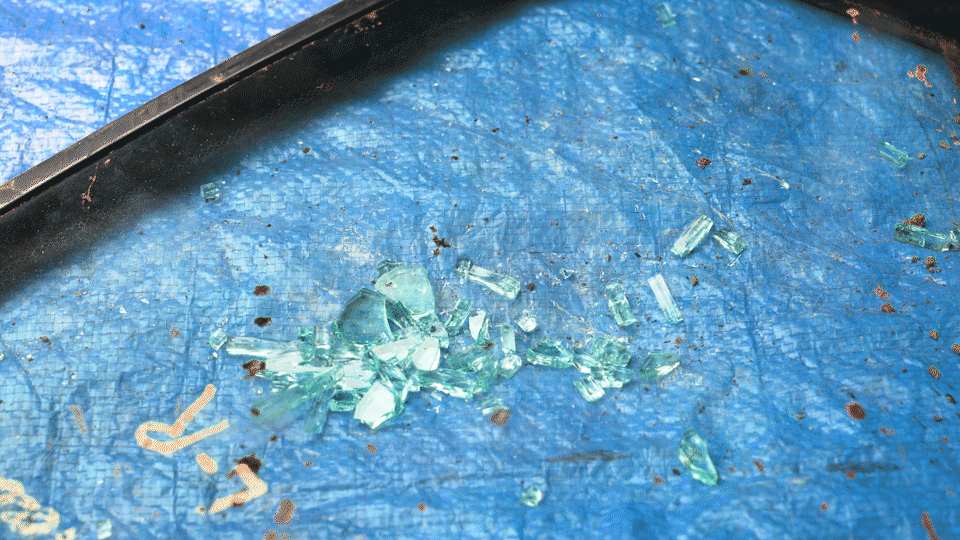
There were three pens that successfully broke the test glass, but the Impromptu obliterated it. Even if there was some variation in the glass samples, the effectiveness of the Impromptu can’t be denied. The glass-breaking steel tip juts out from the pen like a refueling probe on an A-4 Skyhawk, but it gets the job done.
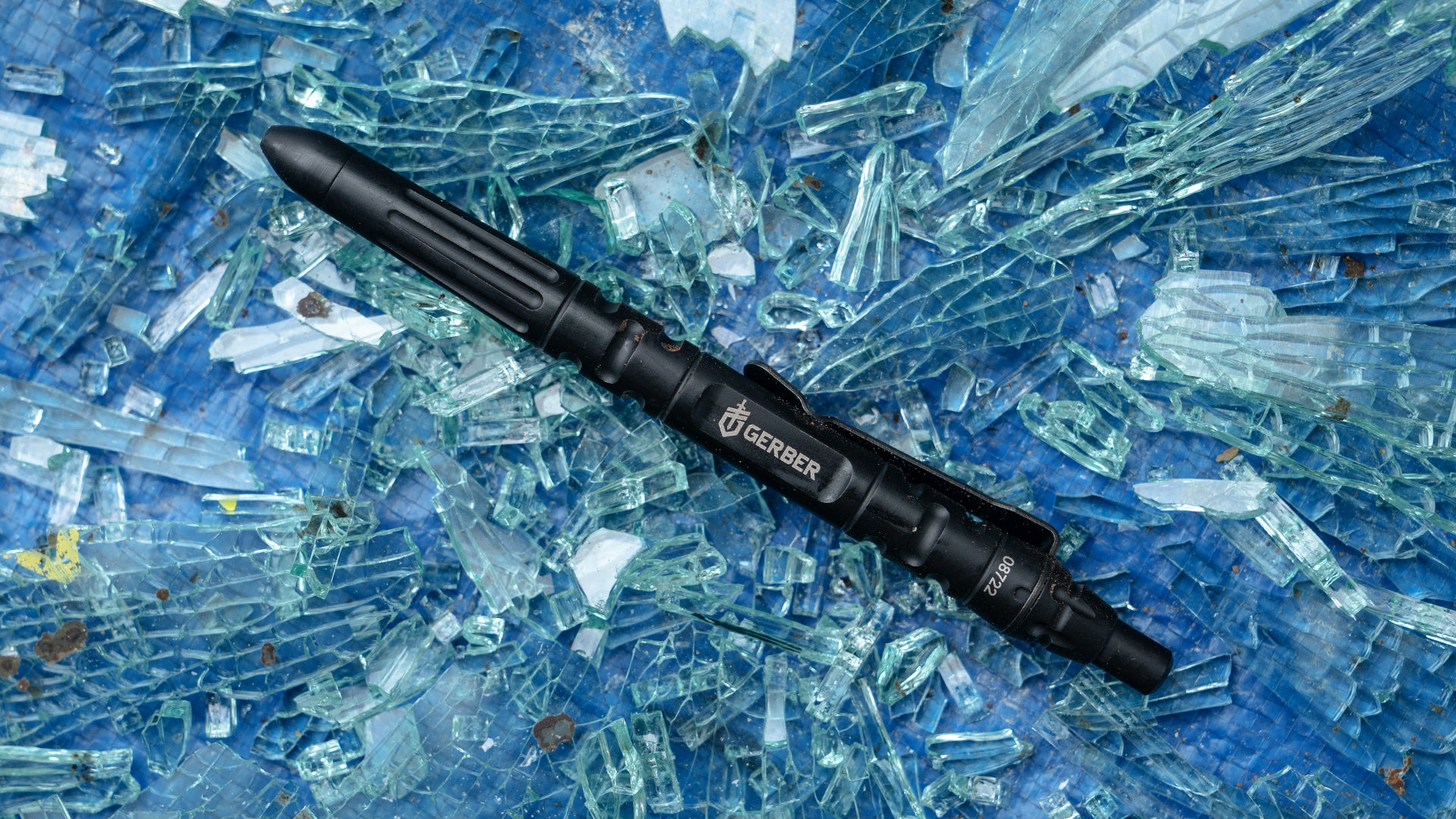
If you expect your tactical pen to be a pen first and tactical second, this is the one for you. The Impromptu is modest in size and fits the hand like any normal pen. Sure, the clicking mechanism presents a possible point of failure, but I wouldn’t give it a second thought. At least there’s no cap to lose. I also appreciated the combination of stainless steel and Cerakote. The Impromptu aced the wet writing and glass tests, which scored major points in my book. This one is probably going to stick around as my personal pen.
Included tools
- Aluminum body
- Schmidt-Mine 635 ink cartridge
- Ferro rod and striker
- Whistle
- Pocket clip
PROS
Hidden gadgets appeal to our inner spies
Deceptively comfortable in the hand for its size
Not excessively tactical in appearance
CONS
Struggles to write in the wet
Not an effective glass-breaker
Tiny ferro rod and striker are difficult to use
The Schrade Reckon is an interesting case. I was excited to find the flint and steel because being able to start a fire is a critical survival skill. Although there are certainly times when a whistle can be used to signal for help, I was much less enthusiastic about one being built into the cap.
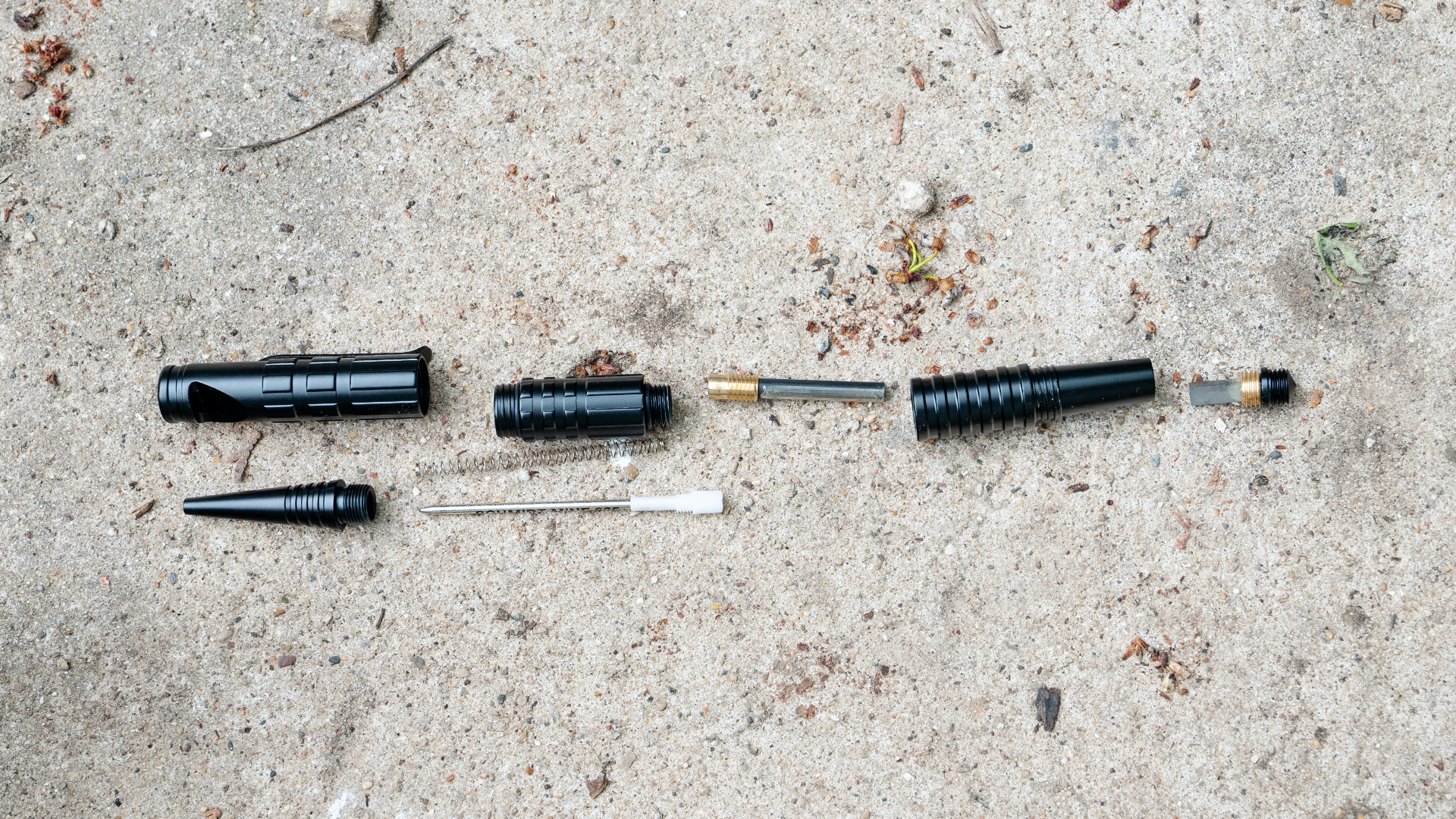
I will say that the ungainly shape falls to hand surprisingly well, and was comfortable to write with as long as the weather stayed dry. The Reckon struggled to write legibly on the wet Rite in the Rain notepad. The letters were there, but they looked like something written with a dying ink cartridge, not a brand new pen that costs $30. There’s a lot to like about this pen, so I’d definitely be looking for a replacement cartridge if I were going to make it my own.
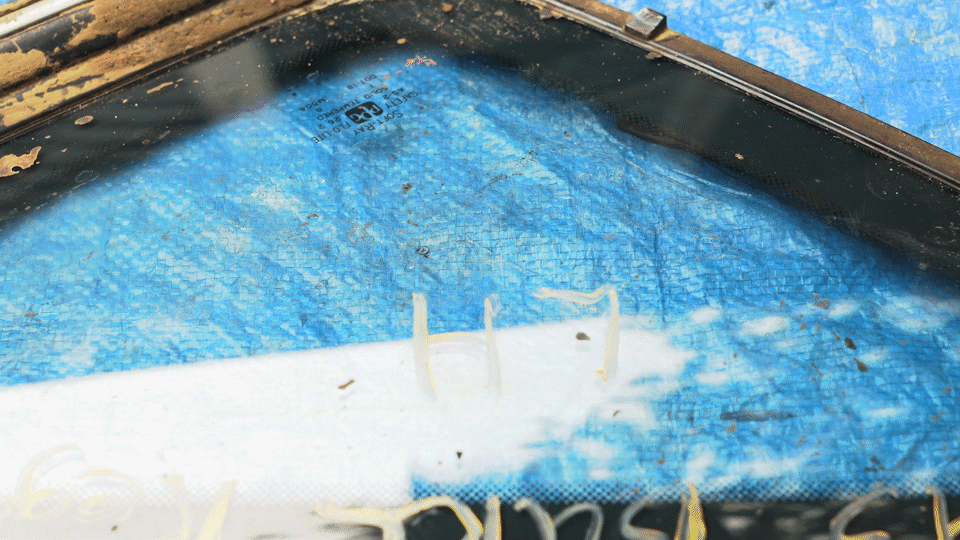
Schrade’s packaging left me unclear as to whether or not it was meant to be used as a glass breaker. The pointy end was labeled a “striker cap,” but I wasn’t sure if they meant it was a cap for the fire striker or a striker that also served as a cap. Testing made the answer abundantly clear: this is not meant to break glass. I assumed that a metal object with that kind of point would do fine against tempered glass, but it bounced off like a tennis ball. Maybe the aluminum wasn’t hard enough, maybe the point wasn’t sharp enough, or maybe I’m just a big wimp. Considering the other pens’ successful test results, though, I chalk this up to using the Reckon Ultimate for an unintended purpose.
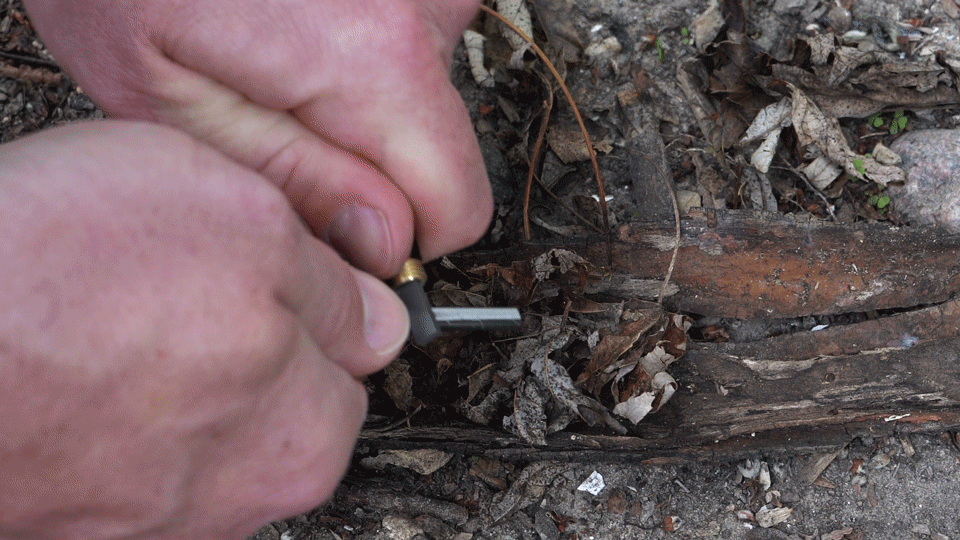
The survival tools inside the Reckon spoke to my inner prepper. This is exactly the kind of thing I would have gone nuts for as a kid. What’s not to love about a pen with hidden gadgets? Even if the whistle had limited practicality, it didn’t hurt anything. I was unsuccessful in my attempt to light a fire using the ferro rod and striker on dry leaves, which is uncommon. The tools were just so small that it was hard to generate adequate spark on target. It’s better than nothing, but I’d be a lot more comfortable with a full-sized alternative. This is best suited to being a backup.
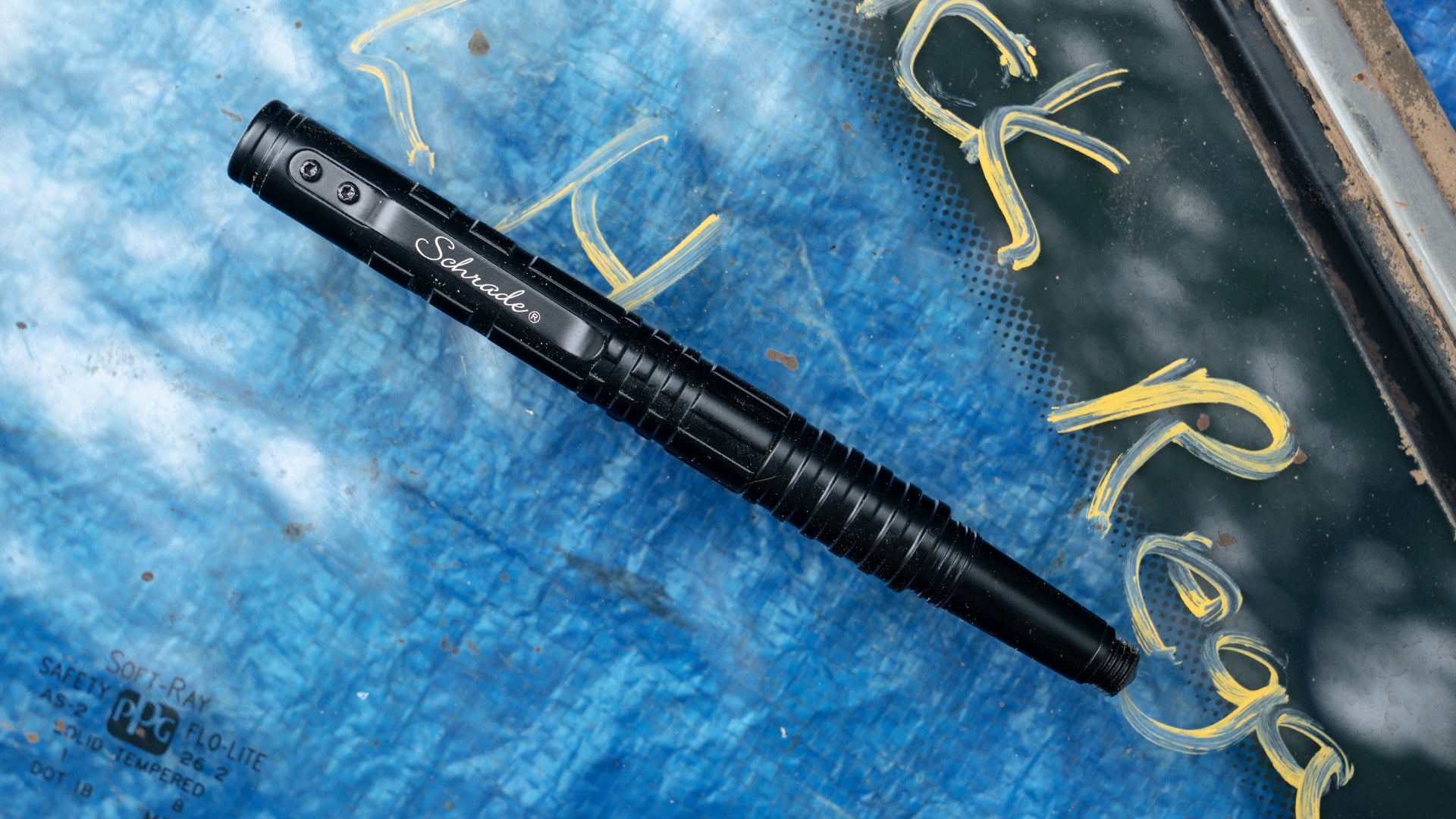
While the Reckon comes packed with promise, actually deploying the pen for practical tasks proved a massive disappointment.
Included tools
- Aluminum body
- Skilcraft ink cartridge
- Glass-breaker
- Phillips and flathead screwdrivers
- Pocket clip
PROS
It never hurts to have a screwdriver handy
No cap means one less thing to lose
One of two pens to pass the puncture test
CONS
The exposed glass-breaker is super sharp
Small Phillips head screwdriver has very limited utility
Not viable for writing in the rain
Like the Gerber Impromptu, the Skillcraft Defender feels like a normal pen. It isn’t oversized or overly aggressive. It will fit in the pen-holders of an admin pouch or office organizer. The one thing you’ll need to remember is that the cartridge is deployed by pressing the tip into the page and releasing it. On the opposite end is a very sharp glass-breaker; you will inevitably stab yourself with it and it will hurt. At least there’s instant feedback to correct the habit of trying to click it like a normal pen.
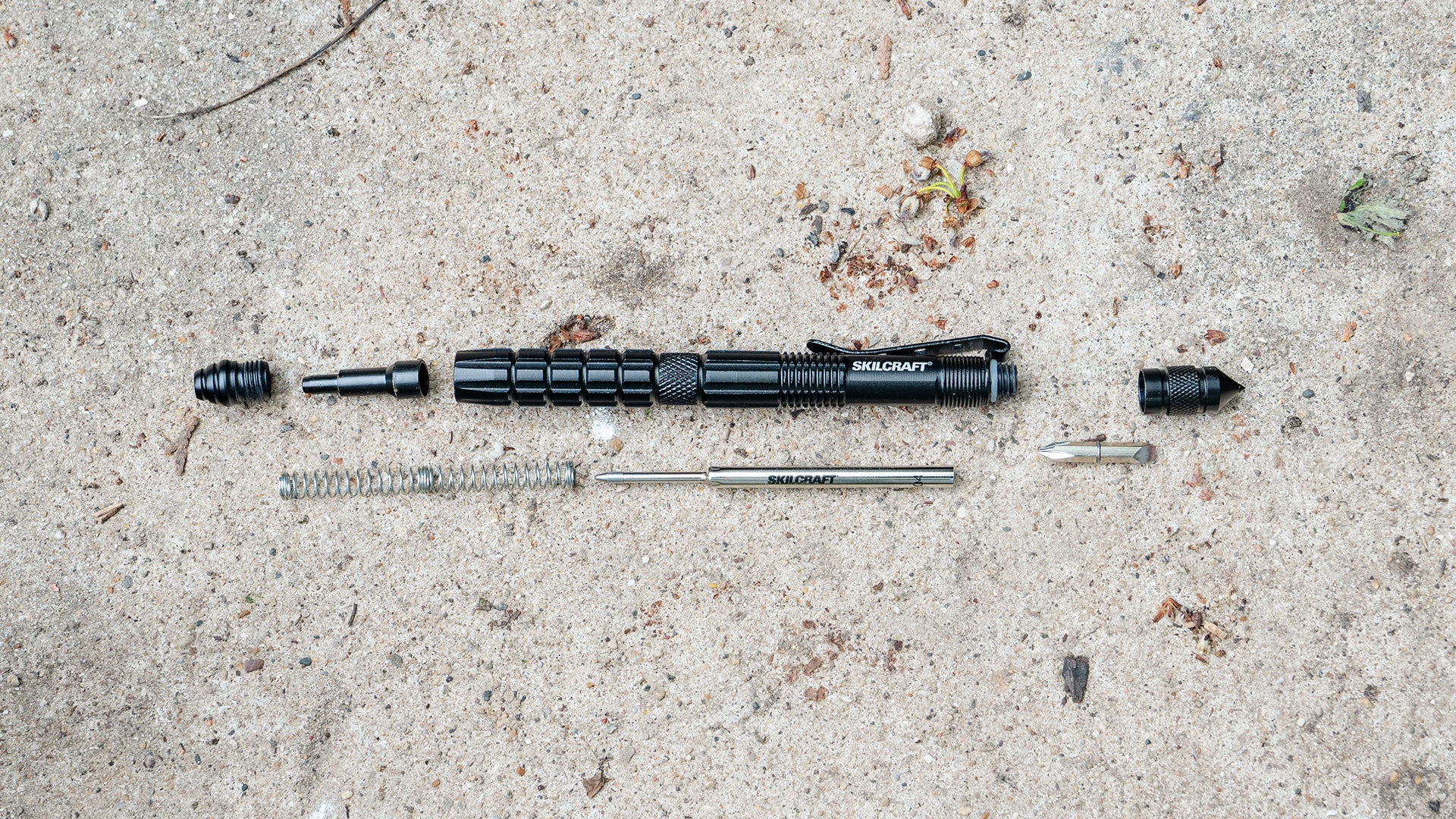
The Defender was the biggest disappointment in the wet writing test. The in-house cartridge barely functioned on the wet Rite in the Rain pad and the letters were hardly visible. Even on dry paper, the ink wasn’t as dark as I’d like.
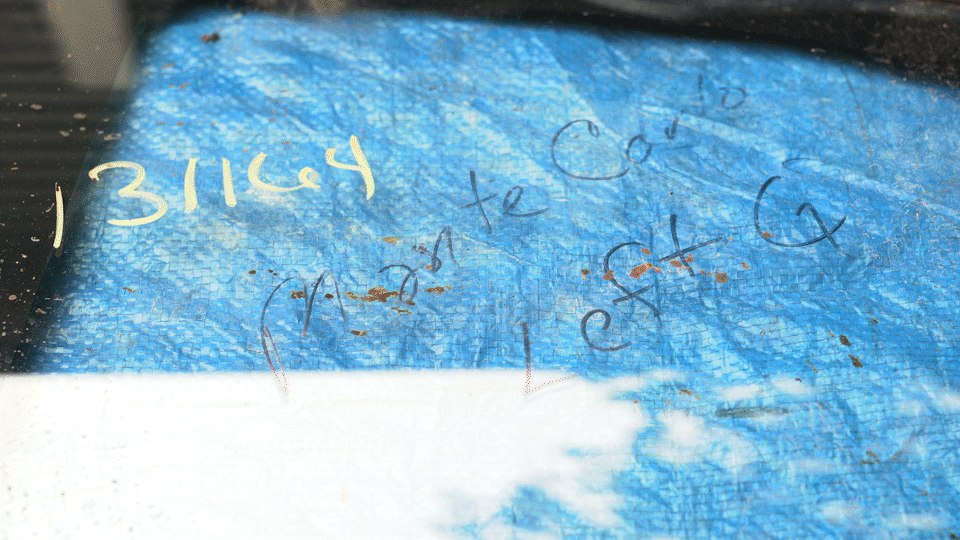
What the Defender lacked in wet weather performance, it made up for with its ability to smash auto glass into tiny pieces. This pen shattered the test window with a modest strike, and I’d feel comfortable with my ability to use it while trapped in a vehicle with a limited range of motion. Just remember to keep your thumb wrapped–this thing will poke you with either end.
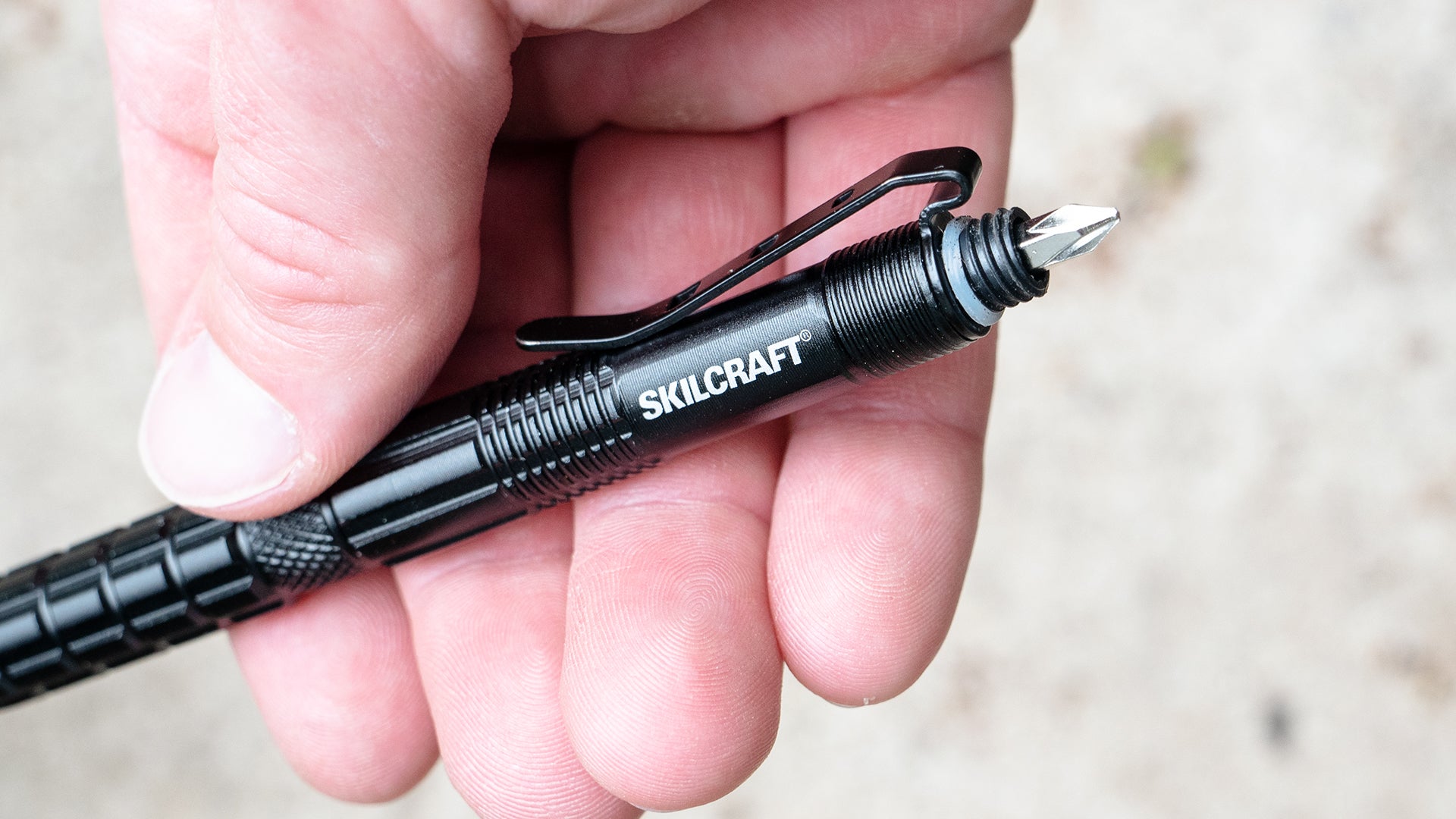
The Skilcraft Defender has a hidden tool beneath the glass-breaker in the form of a double-ended screwdriver. The flathead proved small but usable. The Phillips head, my arch-nemesis in this world, was another story. It’s a number-one Phillips head, which is the smallest common size. Of all the terrible Phillips heads, this one is the worst because it is so small that its only purpose is basically to strip every screw you use it on. There are number-one screws out there, but they’re few and far between. Keep this thing far away from larger Phillips head screws unless you want to show off your swear-word repertoire. Ultimately, the Defender would be usable in an indoor workshop, but I wouldn’t take it into the field without changing the cartridge.
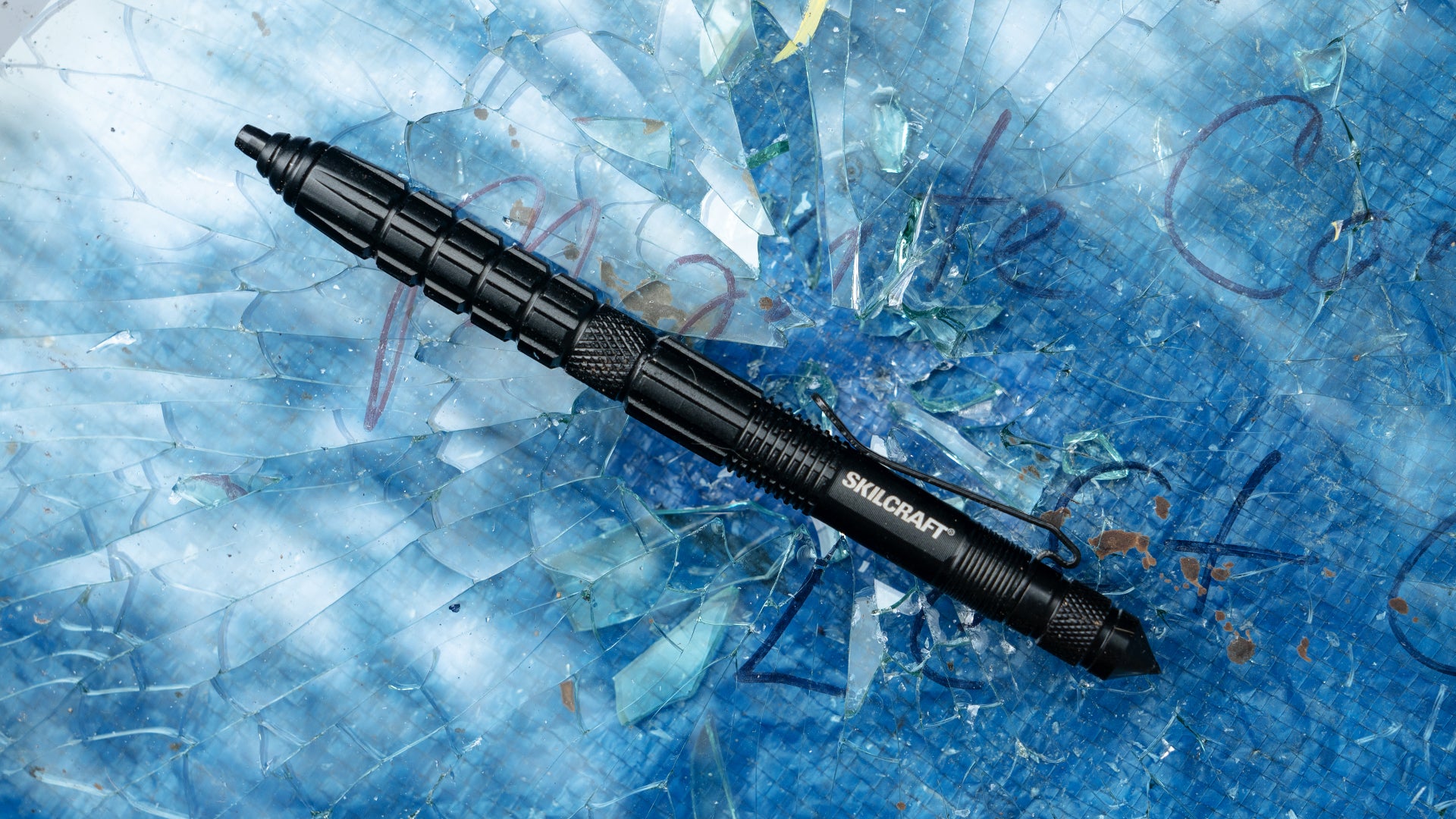
Verdict on tactical pens
So, are tactical pens brilliant or bullshit?
The 5.11 Tactical Vlad is a viable self-defense tool. It’s large enough to offer adequate grip and excelled in all of my tests. Downsides include being too big to fit in a lot of admin pouches’ pen retainers and squeaky threads that make a racket every time you unscrew the cap. The latter can be fixed with a thin application of Pledge, which is a cleaner lubricant than oil and doesn’t attract dirt.
The Boker Plus tactical pen offers the advantage of a nonlethal defensive weapon, but that’s about it. This pen only achieved mid-level writing performance in the rain, felt uncomfortable in the hand, and doesn’t have a way to secure the cap when writing. It has a steel inset but can’t break glass. There are better ways to spend $36.
The Gerber was my favorite pen in this group, partially because it didn’t try to do too much. It’s a quality pen that’s nice to write with. It works on wet or dry surfaces. The glass-breaker is extremely effective. It’s not going to hang with the Vlad as a weapon of opportunity, but there are better tools for that job, anyway. Best of all, I wouldn’t feel like a total gear geek for using it. The only question is whether or not you do enough writing to justify a $70 pen.
The Schrade Reckon Ultimate was the biggest disappointment for me. I wanted to love the hidden ferro rod and striker, but their tiny size made them impractical to use (and all those left- and right-hand threads are a recipe for trouble). If I were going anywhere I thought that making a fire was even a remote possibility, I’d carry the real thing or a lighter. I’m not Will Ferrell in ‘The Other Guys,’ so I have no use for a whistle. This pen feels more like something to show off at a party than gear you’d actually use.
The Skilcraft Defender came close to being really useful but ultimately missed the mark. The ink cartridge was useless in the rain and you shouldn’t have to immediately buy new ink for a $44 pen. It broke the auto glass well, but I stabbed myself every time I tried to use it. Why are both ends so sharp? The screwdrivers are a good idea in theory, but the odds of needing to adjust a number-one Phillips head screw are too low to make this feature worthwhile. This was also the only pen to show wear, which suggests the finish is either paint or low-quality anodizing. Randy Jackson said it best: it’s a no from me, dog.
As a category, tactical pens seem like the answer to a question nobody asked; a self-licking ice cream cone. Are there times when they’d be useful? Sure. They’re kind of like a tomahawk: most of the time you’ll get teased for owning one, but if you ever got to use it you’d be a legend.
One place I can see tactical pens coming in handy is in situations where actual weapons aren’t allowed. If you work someplace in the civilian world that doesn’t let you carry an EDC knife or pepper spray, having a hand-spike that’s marketed as a glass-breaker for legal reasons might be the closest you’ll get to arming yourself. In that case, I’d take a tactical pen over my bare hands and a stapler.
FAQs on tactical pens
You’ve got questions, Task & Purpose has answers.
Q: What makes a pen tactical?
A: Apparently, all it takes is metal and some matte-black paint.
Q: Do tactical pens work in the rain?
A: Yes — if they don’t, they aren’t actually tactical. I will stand by that opinion.
Q: Are tactical pens legal?
A: We’re not aware of any laws specifically banning tactical pens. As always, it’s your responsibility to research your local laws and stay within the lines.
Q: Can I bring a tactical pen on a commercial flight?
A: No, the TSA will not let you carry a tactical pen onto a commercial flight. You can put one in your checked luggage, though.
Task & Purpose and its partners may earn a commission if you purchase a product through one of our links. We independently evaluate gear by putting products in the hands of subject matter experts. The products we test may be purchased by Task & Purpose, our staff, or provided for review by a manufacturer. No matter the source, our testing procedures and our assessments remain free from third-party influence. Learn more about our product review process.
